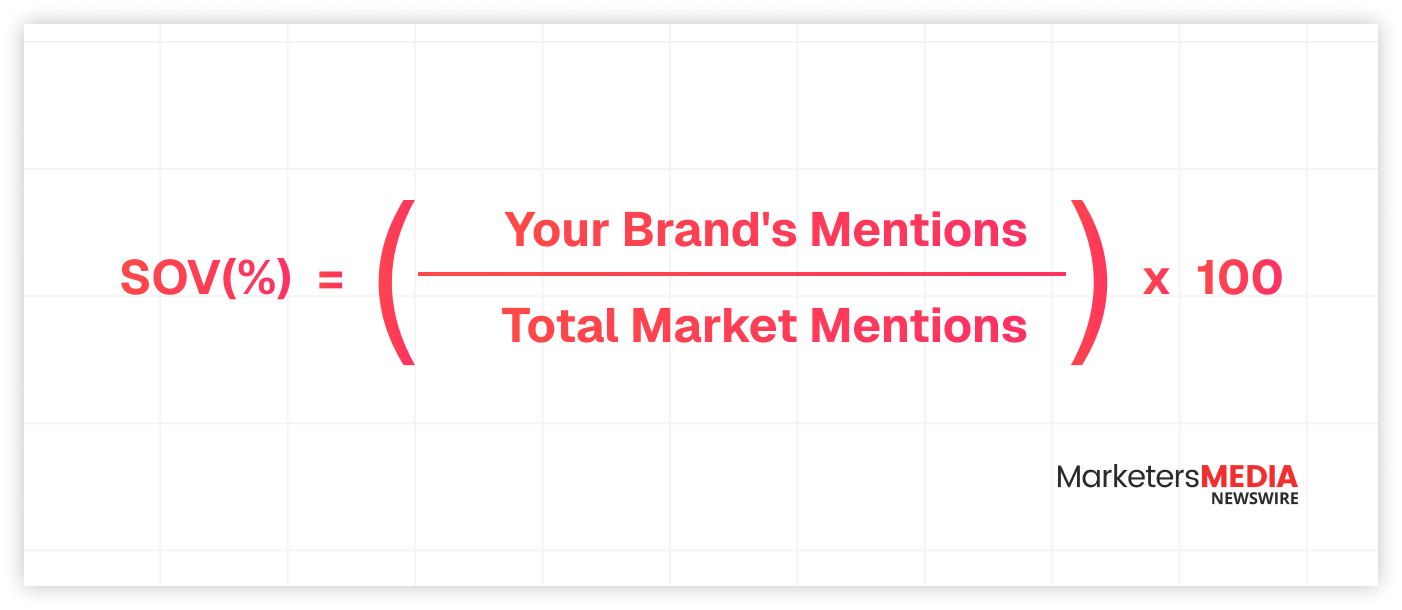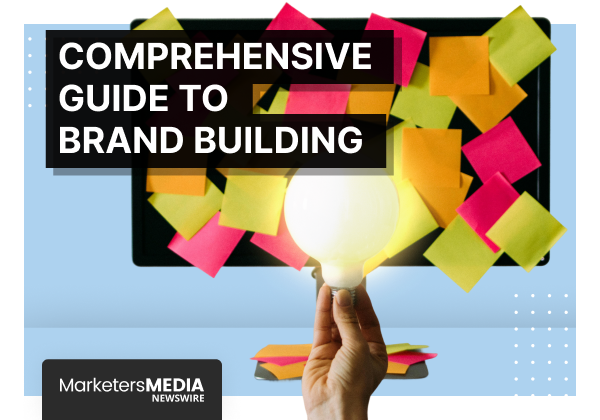There's a common pattern at industry events: some brands dominate the conversation while others barely get mentioned. Why is that?
The answer is Share of Voice—the metric that explains it all, and more importantly, shows you how to grow your share of the market conversation.
What Exactly Is Share of Voice (SOV)?
Imagine your industry as one big conversation happening at a party. Share of Voice (SOV) measures how much of that conversation is about your brand versus your competitors.

Let's say people mentioned your brand 200 times on social media last week. Your competitors got mentioned 1,800 times combined. That's 2,000 total mentions in your industry. Your Share of Voice? 10%.
But here's where it gets interesting. SOV isn't just about counting mentions, it's about understanding whether you're punching above or below your weight class.
If you have 5% of the market but 25% of the conversation, you're building something powerful called 'mindshare'. People are talking about you more than your actual market size would suggest. That usually means growth is coming.
Why is SOV a Big Deal?
On the surface, SOV might just look like another marketing metric—but it does much more. Here’s why it matters:
It Tells You What's Coming Next
SOV works like an early warning system for your business. While market share tells you what already happened, SOV hints at what's about to happen.
Companies with higher Share of Voice than Share of Market typically see their sales grow. It makes sense when you think about it—the more people hear about your brand, the more likely they are to buy from you eventually.
It Shows You Where You Stand
SOV gives you a clear picture of your competitive position without guesswork. If a competitor suddenly jumps from 15% to 40% SOV, something shifted. Maybe they launched a new product or got featured in major publications.
By spotting these changes early, you can dig deeper into what’s working for them, adapt your own strategy, and avoid being left behind.
It Builds Brand Recognition
Every mention of your brand plants a seed in someone's mind. Whether it's a social media post, a news article, or a search result, these touch-points add up. The more often people encounter your brand, the more familiar it becomes.
This is where SEO and PR work together nicely. When your website ranks well for industry keywords and journalists mention you in articles, you're hitting people from multiple angles.
How to Measure Your SOV?
The basic formula stays the same across channels, but what you count changes depending on where you're looking.
Social Media: Track mentions, hashtags, and comments across platforms. Tools like Hootsuite help you monitor conversations and compare your performance to competitors automatically.
Search Engine Results: This measures how often your website appears in search results for relevant keywords. Tools like SEMrush show exactly what percentage of search visibility you're capturing compared to competitors.
News and Publications: Count mentions in news outlets, blogs, and industry publications. Keep in mind that a mention in a major trade magazine carries more weight than a passing reference in a small blog.
Paid Advertising: Google Ads tracks this as "Impression Share"—the percentage of times your ads appeared out of all the times they could have appeared for your target keywords.
The trick is being consistent. Use the same tools and timeframes when comparing yourself to competitors.
How to Improve Your SOV
Boosting your Share of Voice happens in stages. Start with the foundation and build up.
1. Get Your Basics Right
Before anything else, make sure your website works properly. Fast loading times, mobile-friendly design, and easy navigation matter for both users and search engines.
Example: When a mid-sized SaaS company cut its page load time in half, it saw a noticeable bump in organic traffic—giving it more “voice” in search results without publishing a single new blog.
2. Create Content That Sparks Conversation
Share bold opinions, useful insights, or behind-the-scenes stories that invite reactions. The more people engage with your brand, the louder your voice becomes.
Example: A skincare brand ran a “myth vs. fact” series on Instagram, sparking debates and user comments that pushed their mentions up week by week.
3. Partner for Reach
Partner with people who already have the audience you want. This might mean collaborating with industry influencers, guest posting on relevant blogs, or speaking at conferences.
Example: A boutique coffee roaster teamed up with a food blogger. One collab post drove both social mentions and backlinks from industry sites.
4. Track Competitors Closely
Set up alerts to track when competitors get mentioned. Use tools to see which keywords they're ranking for that you're not. When you spot gaps in the conversation, fill them with better, more helpful content.
Example: An online learning startup noticed competitors ranking for “AI study tools” and quickly published a guide on the topic, grabbing part of that conversation.
5. Strengthen Search Visibility
Organize your content around topics rather than scattered keywords. Create comprehensive guides that answer related questions in one place. This approach helps you rank for multiple searches while establishing your expertise.
Example: A financial services firm built a “small business funding hub” that answered dozens of related questions. It became a go-to resource in search.
6. Build Media Relationships
Build genuine connections with journalists and industry publications. Create original research or insights that reporters want to reference. One mention in a major publication often generates more valuable exposure than dozens of social media posts.
Example: A logistics company published survey data on supply chain delays, earning coverage in trade magazines that carried more weight than social buzz alone.
Case Study: How One Brand Boosted SOV
Wendy's provides a perfect example of how strategic PR and social media can dramatically boost Share of Voice.
In 2017, the fast food chain made a bold move by taking direct shots at competitors, particularly McDonald's, through witty social media responses and PR stunts—All while promoting their “fresh, never frozen” beef.
The strategy was simple, but calculated: Their social media team became famous for savage replies to customer tweets and competitor mentions.
The results? Wendy's Share of Voice in fast food conversations skyrocketed. While McDonald's traditionally dominated SOV due to sheer size, Wendy's managed to insert themselves into nearly every fast food discussion online.
During the peak of their social media dominance, Wendy’s saw increases in sales and customer engagement. They proved that a smaller brand could compete with industry giants by owning a disproportionate share of the conversation.
What Brands Can Learn
For paid advertising, focus your budget on what's already working. Increase spending on high-performing campaigns and adjust your targeting to reach people most likely to convert.
Social media success comes from treating it like actual social interaction. Respond to comments quickly. Create hashtags that encourage participation. Run contests or campaigns that get people involved with your brand.
Summary
Share of Voice began as a way to measure advertising presence, but today it’s a window into your competitive position and a signal of future growth.
The brands that dominate conversations today typically win customers tomorrow. But raw numbers only tell part of the story. You also need to understand whether people are saying positive things about your brand and whether those mentions come from credible sources.
Start tracking your SOV across the channels that matter most to your business. Set realistic targets based on your current position and business goals. Monitor your progress regularly and adjust your strategy based on what you learn.
And when you’re ready to amplify your earned media, press release distribution services like MarketersMEDIA Newswire can help extend your reach. Getting your news and thought leadership into trusted publications is often the first step toward building the kind of media presence that drives sustainable Share of Voice growth.
Free Press Release Template
Tell us where to send your PDF:







